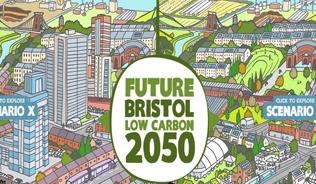Listen to more episodes of 'From the Archive' on the series hub.
Technology and the environment have always been interlinked. Technological development is driven by humanity’s need and desire to harness resources in the environment or disrupt normal environmental processes for their benefit. Technology has allowed us to no longer be governed by natural environmental processes and barriers – we can light our homes any time of day using the energy unlocked from fossilised carbon, we can dam rivers and direct their flow, and we can traverse the globe from the comfort of our armchairs, to name just a few.
Rapid technological development since the Industrial Revolution gave some the false impression that we no longer depend on the environment for our wellbeing and that the environment was vast and resilient enough to withstand anthropogenic pressures. This illusion was quickly shattered, however, and as our understanding of ecosystem services grows, we have started to appreciate the fundamental role of the environment in human health and wellbeing.
Air and water pollution, soil degradation, biodiversity loss and climate change are all interlinked environmental crises which have been driven by technological development to support economic growth and intensive farming for a growing population. Paradoxically, technological innovation is now touted as a key solution to addressing environmental crises and unlocking green growth. New technology is catalysing the transition to net zero, providing us with new ways to embed the circular economy and increasing our ability to understand the world around us.
This article explores the role of the continuing megatrend of technological development in the environment sector and how technology can support the transition to a sustainable society, spotlighting some key areas in the sector where technology is changing our ways of working. It then considers the role of technology in reaching net zero ambitions and explores the benefits and disadvantages of these technologies.
How is technology changing the work of environmental professionals?
The work of environmental professionals has been heavily impacted by technological development and the next generation will need to continue to adapt and upskill as technology develops further. A few key examples are listed below:
What technology is needed for the transition to net zero?
The most prominent example of the role of technology in supporting a sustainable society is in the path to net zero; a host of environmental technology will be needed to deliver on net zero ambitions. Harnessing renewable energy requires continual innovation and improvement of existing technologies. Below are some examples of areas where technological development is needed and the wider implications of that technology:
The importance of systems thinking
Technology will be an integral part of addressing environmental crises and supporting environmental professionals in their work. However, to unlock the benefits of technology and mitigate against unintended consequences, is it vital that a systems approach is used when developing and applying new technologies to ensure that co-benefits are realised, and we don’t repeat past mistakes. Only then can we use technology for the benefit of both people and planet.
Find out more
This article has been written to support the Future of ES23 horizon scanning and foresight project, in which the IES has been examining how megatrends will shape the future of the environmental sciences.
Tthe IES has published a short briefing paper to encourage awareness of the nature and effects of megatrends such as climate change and rapid urbanisation to support horizon scanning for environmental professionals and to identify opportunities to inform pathways towards a positive future for environmental science.
Read the briefing for an introductory view, in the context of the breadth of wider literature on the topic of megatrends.





